With the rise in trends, searching for the perfect niqab hijab style in 2025 can be really tricky. You have options like a full burka, 3-layer niqab, abaya niqab, and many more. You aim for cover, class, and comfort.
This guide will help you in finding the perfect styles of niqab hijab that you can carry with utmost grace, identity, and lifestyle. So, keep reading this blog!
Importance of Niqab and Hijab in Islam
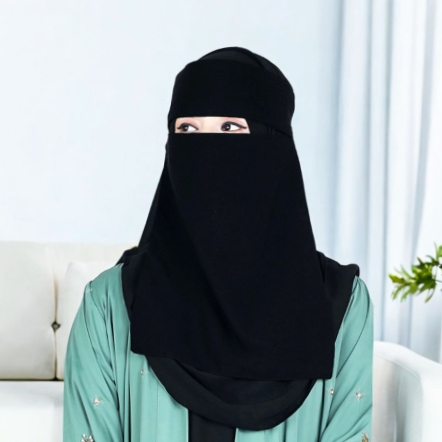
The niqab hijab, or hijab, has a very special meaning and significance in the Islamic religion. It is not just another form of clothing; rather, it is a technique of showing faith and respect towards yourself and the values you hold.
i) A Sign of Faith and Identity
The importance of hijab in Islam carries more than just the piece of cloth. It represents faith, dignity and respect. Wearing niqabs and hijabs in Islam is a way of showing devotion and staying close to the religion.
ii) Modesty and Protection
The niqab hijab style, the abaya and niqab and the pieces of clothing serve a similar purpose to modesty. They provide a sense of privacy and confidence while out in public. There are many options to choose from, like the niqab, abaya and burka with hijab, that provide you with the modesty you need in a variety of situations.
iii) Cultural Roots of Modest Dress
Cultural history is captured in the Arab niqab and the burqa khimar. Each is more than an article of clothing. Each represents an aspect of identity. Their wearers are connected, through the ages, to those who practised the same values.
iv) Guidance from Islam
Teaching of the Islam faith states that self-honour is achieved through donned modesty, and while some would debate the punishment for not wearing the hijab in Quran, most would agree that it is a choice dictated by faith and not fear.
v) A Personal Commitment
It’s a decision made by an individual. Each wears the sets, be it a niqab with hijab or a simple niqab, and strives to embrace modesty with eloquence. Every decision made is self-respect aligned with faith.
Niqab vs. hijab vs. burka: key differences you should know
Alright! Each individual should be aware of the distinctions between niqab, hijab and burka hijab to find that which works with your beliefs and way of life. Each has their own distinct style, coverage and meaning. Let’s discuss basic differences:
Hijab: The Hair and Neck are to be Covered
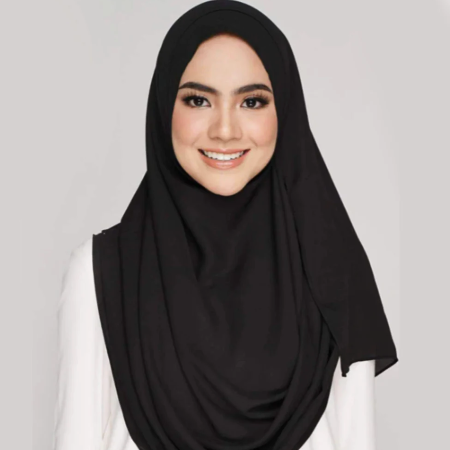
A woman wears a hijab by wrapping a scarf around the head, which then enables her to tuck away the hair and the neck, sometimes even the shoulders. The scarf itself is designed in a way to leave the face open, enhancing the wearer’s visibility, and lightens the load of the daily cip. You’ll see it in many styles. There are simple wraps all the way to colourful hijab and fashion niqab combinations.
Niqab: The Face Veil
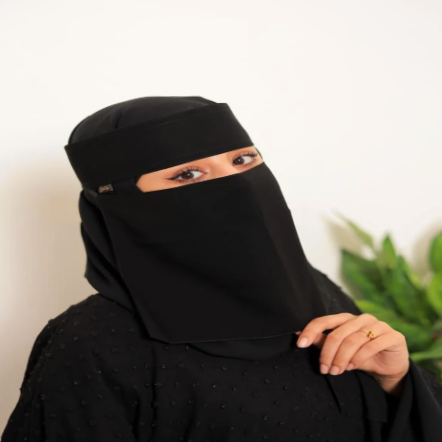
A niqab is a type of hijab that conceals the entire face, leaving only the eyes exposed. It can also be used in combination with an abaya niqab or on its own with a niqab hijab. Some popular types are the 3-layer niqab, green niqab, and various fashionable niqab designs.
Burka: The Full Body Cover
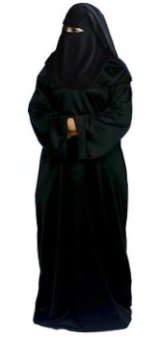
The burka hijab niqab, also known as the full burqa dress, covers the whole body with an entire body-covering garment that includes a mesh screen for the eyes. Some of its variations are the green burqa, burqa khimar and some burqa Islamic designs. It is one of the most traditional examples of modest attire.
- Cultural Influence
The Arab niqab, burqa and hijab styles have significant relevance to the customs of that area. Different cultures put their own spin on things by changing the type of cloth used, the embroidery, and the colours.
- Modern Variations
In 2025, you are able to find chic styles of burka, niqab, and hijab as well as derogatory bridal hijab with niqab. Modern designers have also produced styles of a black niqab wedding dress that fuse sophistication with traditional modesty. It is these changes that allow you to have more versatility in your modest fashion.
| Feature | Hijab | Niqab | Burka |
| Coverage | Hair, neck, shoulders | Face (eyes visible) | Full body, including eyes |
| Variations | Wraps, scarves, styles | Full niqab, 3 layer, fashion niqab | Full burqa dress, burqa khimar |
| Cultural Roots | Worn worldwide | Strong in Arab traditions | Common in South Asia, Middle East |
| Comfort Level | Light and easy | Moderate, covers face | Heavier, maximum coverage |
| Modern Updates | Hijab fashion niqab blends | Bridal hijab with niqab, green niqab | Black niqab wedding dress, green burqa |
Abaya Niqab and Abaya with Niqab: Traditional Yet Modern Choices
Well, wearing this form with niqab has always set the mark for faith and grace. And in the current world, readers can find both timeless and trendy choices for any day and event. Let’s discover how this classic option is still an active choice for you.
Cultural Roots of Abaya Niqab
The black abaya niqab is the most basic type of modest clothing. It first appeared in the Arab lands where women wore the Arab niqab along with the basic abaya. This combination slowly turned into an emblem of a modest yet noble identity.
Modesty with Modern Elegance
As of today, unique options like the embroidered, laced, and lightly fabricated abaya niqab sets are on offer. These are not only discreet but also remarkably classy; even the niqab abaya comes in a number of shades, including a lovely green niqab and abaya.
A Personal Expression
Every woman adds her own personal touch to the various styles available, for instance, the burka and hijab combination, the niqab hijab set, or the black wedding dress and matching bridal niqab, demonstrating how a modern bride can retain her faith in the beautiful ensemble.
Popular Niqab Styles in 2025: From Full Niqab to 3 Layer Niqab
Best known for the discreet and fashionable niqab styles in 2025, there has never been so much choice available to women. Along with the discreet options, the 3 layer niqab has also grown in popularity. Let’s now explore the ones that are most cherished.
Full Niqab: Classic and Modest
The full niqab veil is respected for its minimalistic design and is most preferred by women who want complete privacy, as it leaves only the eyes unveiled. It is most often paired with either the full burka dress or the abaya niqab for added sophistication.
3 Layer Niqab: Stylish Protection
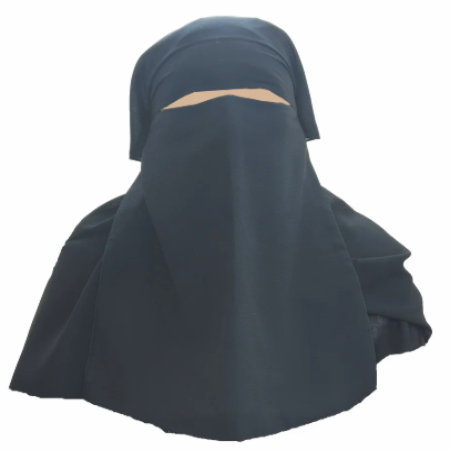
The 3 layer niqab has more than one layer that can be lifted or lowered. It maintains balance as it retains a frame while providing flexibility. This design is favored by younger women, as it provides modesty without sacrificing comfort.
Burka Hijab Variations
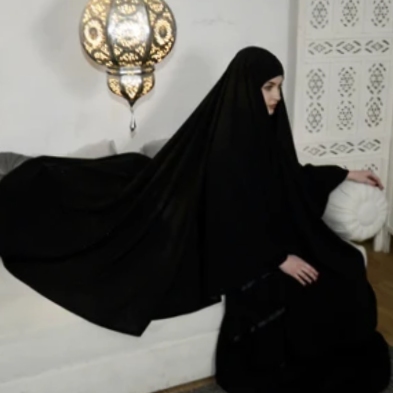
Contemporary burka hijab niqab designs have less weight and are easier to put on. You can now find materials and shades suitable for every event, such as the green burqa or the minimalistic-style Islamic burqa.
Fashionable Touches
Niqabs with embroidery and thin materials have started cropping up as new trends. Even a stylish niqab hijab burqa can be paired with a black abaya niqab to create a sophisticated look.
The Psychological and Social Impact of Wearing Niqab Hijab
The sociological aspect of the hijab is more than a simple clothing choice. The way women internally perceive themselves and how society perceives them is altered in a profound way.
Confidence and Inner Strength
The cover of a niqab boosts the confidence of many women. There lies a deeper, unacknowledged inner calm, the peace of mind that is with self as a result of the niqab hijab style or niqab covering a personality, which is far more important than the superficial appearance.
Empowerment Through Modesty
The freedom of self-presentation with a choice of a niqab or a burka hijab, or even an abaya and niqab, is most often an empowering choice. It allows the woman to self-express with self-modesty while also observing her beliefs. Modesty is, at the same time, a dignity, not a limitation.
Facing Prejudice with Grace
Unfortunately, there continue to be stereotypes concerning styles of the niqab. Women with a burqa hijab niqab often face questions due to media bias or challenges in the workplace. Despite that, many of them tend to show patience that, in turn, shows the faith is greater than the judgement.
A Symbol of Identity
The hijabs and niqabs in Islam serve as a reminder for the women to not lose touch with their spiritual identity. The act of covering themselves with it, also as an act of faith, is a mark of self-respect and unyielding spirit.
Niqab in the Workplace and Daily Life: Modesty Meets Professionalism
For a lot of women, wearing a niqab is a part of a day’s routine. Keeping in mind the work and social behaviours, the niqab hijab is a reflection of the belief and the self.
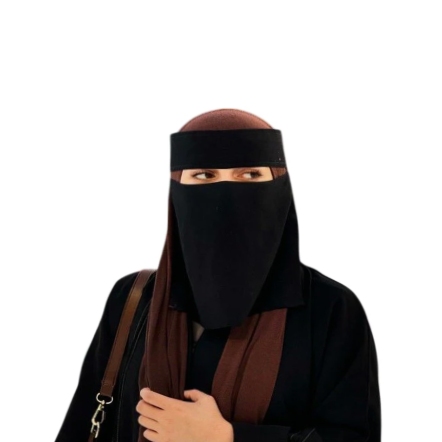
Acceptance in Professional Spaces
Having restrictions in the professional world with the hijab or niqab is changing in a positive direction. Out of many women, a considerable number of women in professional fields like banks, schools, and even at the corporate or head office wear the nijab abaya or burka hijab like professionals. There is a misconception about professional attitude being reflected in what a person is wearing, Instead of the actual skills or abilities of that individual.
Balancing Faith and Career
There is a common misconception that wearing the hijab or niqab will negatively affect a person’s professional development. They will say, ‘She is so dressed,’ without knowing that she is in the abaya and is able to wear this professional clothing. These women have proved that dressing modestly is possible even while being successful in the professional world.
In fact, the niqab and the abaya should be the very first attire that comes to mind in the case of women because it is very professional, and most importantly, it is a reminder that no one should lose their identity just because everyone has decided to compromise on it in the name of so-called acceptance.
Daily Life and Confidence
Women in the niqab hijab leisurely walk in the streets or even at the shopping centres without any form of self-consciousness. They do not put on fancy clothes in the name of fashion and are able to swim with the contemporary fashion. They select a niqab and wear that which is most comfortable to them. In fact, by wearing a niqab, they wear a form of dignity which portrays their self-respect.
Niqab and Feminism: Freedom or Restriction?
Women’s issues relating to the hijab and niqab are many. For the feminists, that is to say, the advocates of women, niqab is a form of oppression. But the very reality is there are women who shall say it is a form of liberation.
Western Feminism Views
In the west, the burka, hijab and niqab are sometimes considered as a part of oppression. The media oversimplifies the narrative, not considering the women’s accounts of wearing it. But not all voices of feminism think the same. Some of them do admit that the choice itself is an element of empowerment.
Women’s Right to Choose
For Muslim women, wearing the abaya and niqab or the niqab and hijab is a choice that is deeply personal. It is not an issue of being subjugated but rather of demonstrating modesty, dignity, and faith. Many women wear the niqab abaya as a symbol of their strength and independence. The decision to wear a hijab, burka or niqab should be regarded as a woman’s right.
Freedom in Modesty
Inner freedom is sometimes expressed in the way of wearing the niqab. It is said that by wearing a hijab, a woman shifts the discourse away from appearance and concentrates on her capabilities, principles, and personality. This way of thinking goes against the mainstream understanding of hijabs and illustrates that modest fashion is also a form of empowerment.
Niqab Through the Lens of Media and Society
Public attitude and media discourse on the subject of the niqab hijab inform how the rest of the world perceives the issue. Some think of it in terms of modesty, while others fail to grasp its significance at all.
Common Stereotypes Around Burka Hijab
Despite the lack of nuance afforded to the subject by the media, the burqa and hijab are not uncommonly associated with some form of oppression or extremist ideology. Such stereotypes foster an unjust bias against those women who choose to wear the niqab and abaya, completely overlooking the rich cultural, spiritual, and individual elements associated with the choice to embrace this particular form of hijab.
Negative Portrayals
Within the realm of film and news, the full burqa or the niqab and hijab are sometimes presented as an impediment to liberty. Such imagery is corrosive, as it instills suspicion and ignorance. Most troubling is the manner in which it exacerbates the difficulties some women face in reconciling their personal spiritual practices with their wider role in society.
Positive Portrayals
The bright, or perhaps more accurately, rosy illustration comes from some segments of the more contemporary media and the modest fashion industry. They focus on the beauty of the abaya and niqab, the self-assured poise of Muslim women, and the remarkable range of niqab designs. Such imagery promotes positive values of honour and dignity.
Religious and Cultural Significance of Niqab Hijab
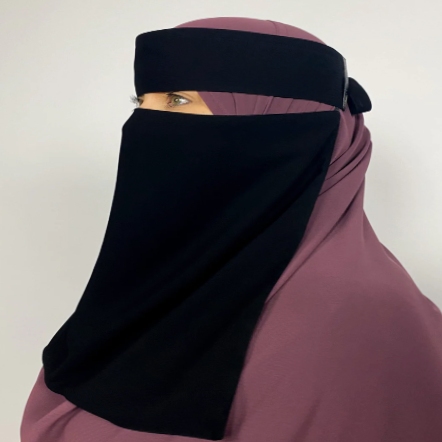
The Cultural and Religious Importance of the Niqab Hijab Sweeping the head and face with a niqab hijab has significant cultural and religious importance. To many Muslim women, this embodies covenant and devotion, shield and grace, as well as radiance and identity.
References from Quran and Sunnah
According to the Quran and sunnah, the emphasis on modesty is considered a sign of respect and dignity. Wearing the hijab, burka, abaya, niqab, or full niqab is an expression of complete submission to Allah. They confirm that covering is a means of protecting one’s honour and respect in society.
Why Modest Clothing Matters
Such clothing includes the burka hijab, niqab, or niqab abaya modesty. Self-respect is evident. The black abaya niqab and other colourful options, such as the green niqab or green burqa, can be chosen by those who wish to practice and balance culture and modesty.
Cultural Importance
The burqa is an Islamic tradition that demonstrates the complex relationship between spiritual and cultural identity. For centuries, women have worn the complete set of niqab and hijab to connect to their roots and practice their faith. Such culture and faith fusion is why it is such a powerful statement to make.
FAQs
What is the difference between a hijab and a burka hijab?
The hijab is a headscarf, whereas a burka hijab includes full-body and face-covering, thus providing complete privacy and modesty.
Which niqab styles are trending in 2025?
In 2025, the 3 layer niqab, the fashion niqab, the bridal hijab and niqab, and colorful variations such as the green niqab are becoming increasingly popular around the world.
Can women refuse to wear hijab or niqab?
Yes, as in many cases, women’s choice is upheld by many scholars, even if there are variations. While some cultures believe that it is expected, Islam focuses on the intentions and the actual belief, rather than the lack of choice, in putting on the hijab or niqab.
Where can a woman take off her hijab or niqab?
A woman is allowed to take off her hijab or niqab in a private area, provided the woman is with her close family or in the presence of non-mahram men, according to the teachings of Islam.
Conclusion
Thus, it is concluded from the above discussion that by the year 2025, there are exquisite niqabs and hijabs, such as the fully covered burka, the 3 layer niqab, and the graceful abaya niqab, which display a fusion of tradition with contemporary sophistication. Each represents a symbol of faith, modesty, and a personal narrative.
The choice of a burka hijab, fashion niqab, or a simple niqab hijab style is something that is personal for each woman. We all have the responsibility to protect and defend that choice. Discover your ideal niqab hijab style today to express your beliefs wholeheartedly!

